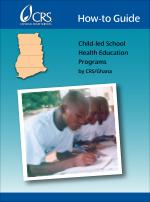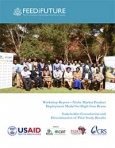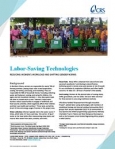Manuals | March 11, 2009
How-To Guide
This manual explores the ways that children can be mobilized as leaders in the effort to create more healthful school environments and communities. A child’s health status is a major determinant in whether or not s/he will succeed in school. Reducing environmental threats to health and promoting healthy behaviors can positively impact attendance and achievement at a school.
The manual also describes the need for effective partnerships among schools, community groups, and ministries and other government service providers. These are important to leveraging the enthusiasm of the students for school health and creating a foundation for long term sustainability.





